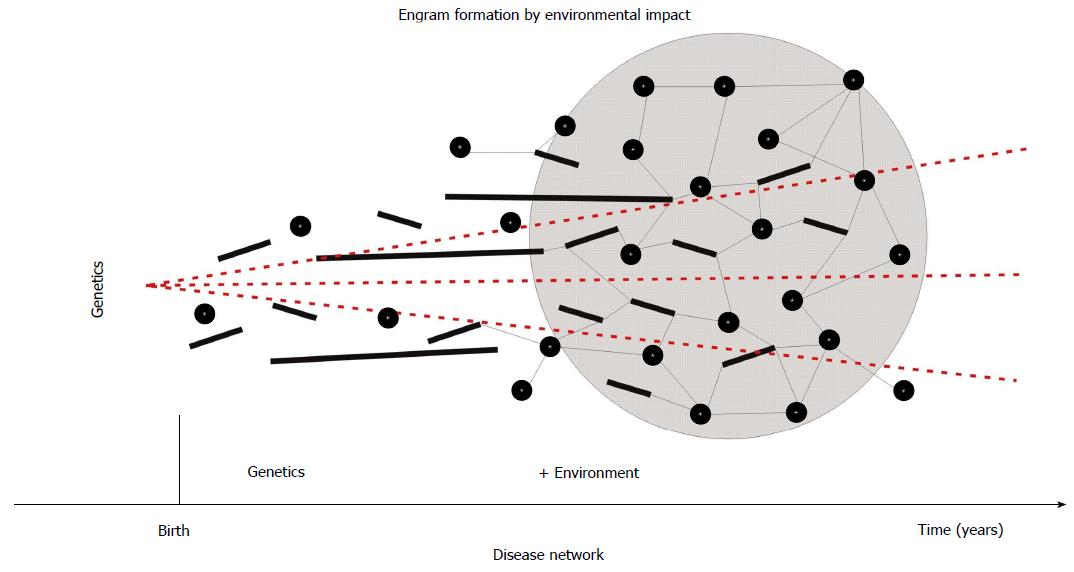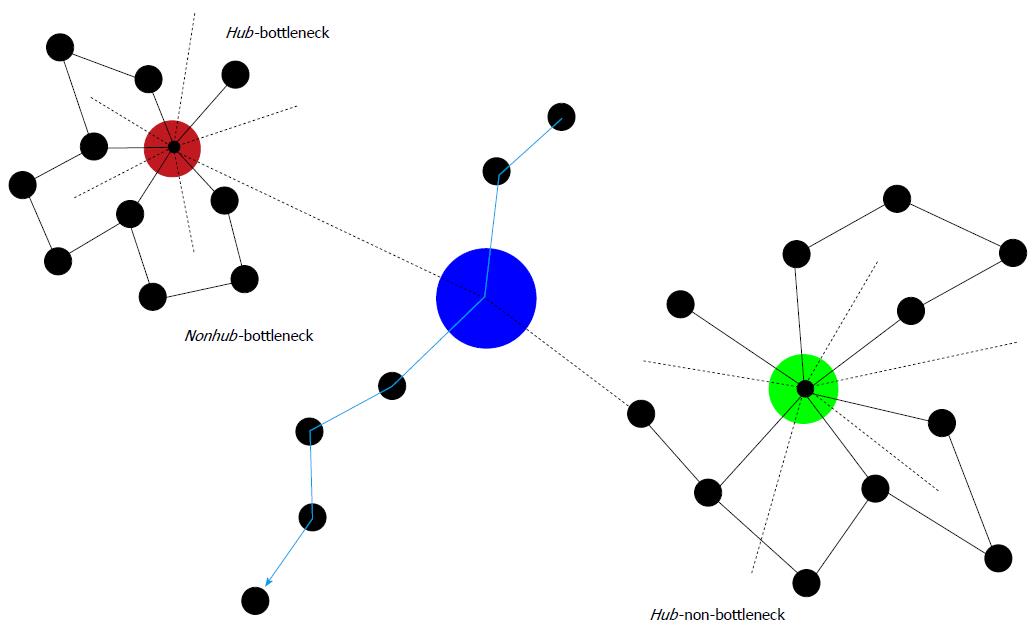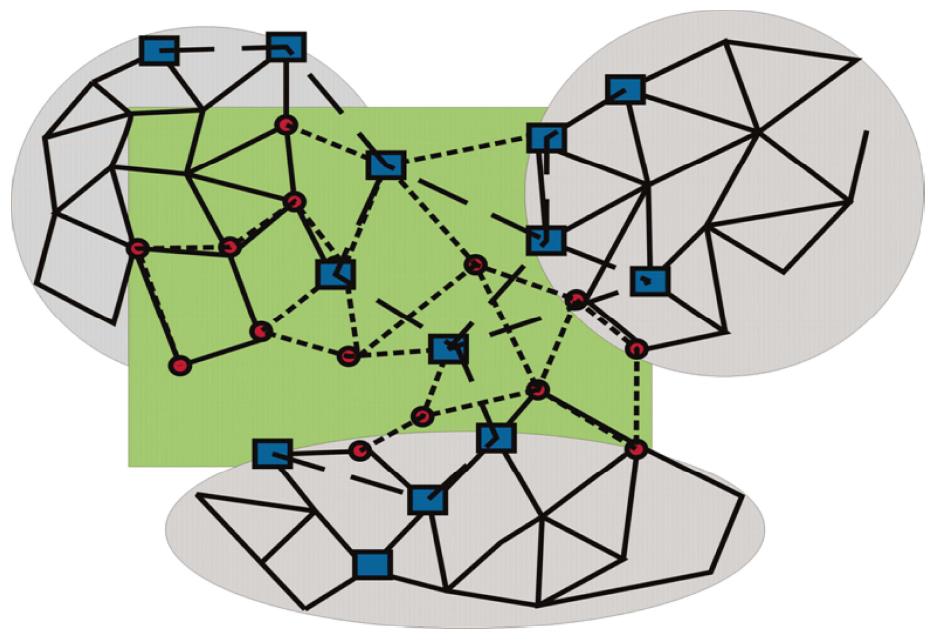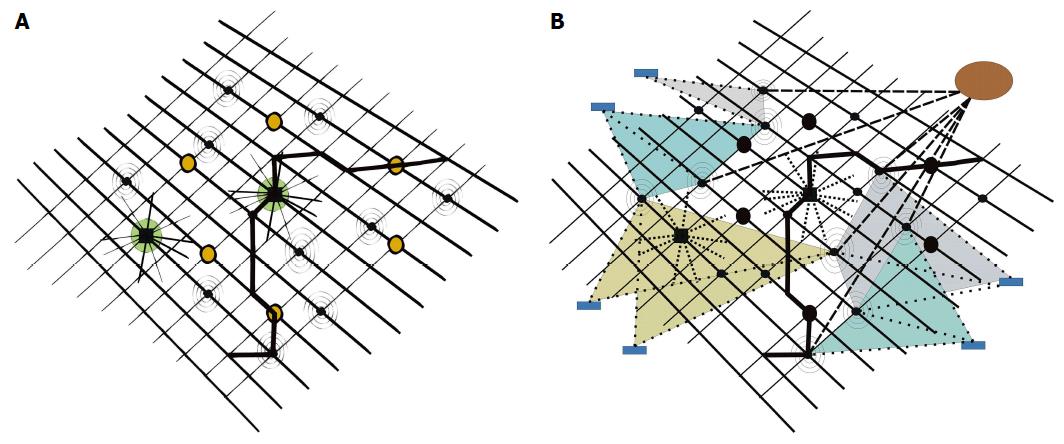Copyright
©The Author(s) 2016.
World J Psychiatr. Mar 22, 2016; 6(1): 66-83
Published online Mar 22, 2016. doi: 10.5498/wjp.v6.i1.66
Published online Mar 22, 2016. doi: 10.5498/wjp.v6.i1.66
Figure 1 Theoretical formation of a disease network in human brain.
Short-term (e.g., traumatic = circles), medium-term (short bars), and long-term (e.g., family = long bars) adverse impact emboss molecular engrams that eventually synergize to form a disease module or network (as shown by connections between nodes). Because the development of the human brain occurs predominantly postnatally, these environmental (epigenetic) influences appear to have more importance than the underlying genetic vulnerability (dashed lines).
Figure 2 Some characteristics of protein-protein interaction networks.
Hubs are important nodes (proteins) due to their numerous connections (dashed lines = connections in 3rd dimension). Directly inserted into a biochemical pathway, they can also represent a bottleneck (Hub-bottleneck). Otherwise, they are Hub-non-bottlenecks. Nonhub-bottlenecks are nodes inserted in biochemical pathways, but lacking numerous connections. Evidently, disturbances of any of these three important types of nodes result in serious consequences. Therefore, although associations of chronic mental illness with these types of nodes may exist, more unwanted side effects than benefits would ensue from targeting these types of nodes by pharmacotherapy.
Figure 3 Topological, functional, and disease modules.
Locally densely connected topological modules (grey circles) contrast with functional modules (circles connected by short, dashed lines), showing more (upper left), less or no overlap (center) with topological modules. The latter are preferentially associated with signal transduction pathways. Disease modules (nodes shown as dark squares, and connected by long, dashed lines) overlap with topological and functional modules, but may be less intensively connected and occupy more peripheral sites of networks.
Figure 4 Molecular disease network.
A: With two “hubs” (big, dark circles, showing high connectivity profiles) and six “bottlenecks” (dark circles), inserted in pathways (one pathway highlighted in bold), plus additional molecular nodes, tentatively disturbing network oscillations (spiral nodes, belonging to disease network); B: Subtle disturbances of network harmony by molecular nodes of minor importance (spiral nodes) may substantially interfere on a long-term scale in their summation with network oscillations and result in disease. Drugs with multi-target properties (circle upper right, strong, dashed lines), or multiple drugs with specificities for only one or a few targets (rectangles in periphery, weak, dashed lines) may address nodes of disease networks and reset disease networks to networks characteristic of healthy states.
- Citation: Gebicke-Haerter PJ. Systems psychopharmacology: A network approach to developing novel therapies. World J Psychiatr 2016; 6(1): 66-83
- URL: https://www.wjgnet.com/2220-3206/full/v6/i1/66.htm
- DOI: https://dx.doi.org/10.5498/wjp.v6.i1.66












